Novel mechanism of plasma prekallikrein (PK) activation by vascular smooth muscle cells: evidence of the presence of PK activator
- PMID: 25620170
- PMCID: PMC4337887
Novel mechanism of plasma prekallikrein (PK) activation by vascular smooth muscle cells: evidence of the presence of PK activator
Abstract
The contribution of plasma prekallikrein (PK) to vascular remodeling is becoming increasingly recognized. Plasma PK is activated when the zymogen PK is digested to an active enzyme by activated factor XII (FXII). Here, we present our findings that vascular smooth muscle cells (VSMC) activate plasma PK in the absence of FXII. Extracted plasma membrane and cytosolic fractions of VSMCs activate PK, but the rate of PK activation was greater by the membrane fraction. FXII neutralizing antibody did not affect PK activation by extracted proteins of VSMCs. VSMC PKA was inhibited by the serine protease inhibitors such as aprotinin, phenylmethylsulfonyl fluoride, leupeptin and CTI with CI50 of 0.78 μM, 1 mM, 3.13 μM and 40 nM on the cultured cells, respectively. No inhibition of PK activation by cysteine, aspartic acid, and metalloprotease inhibitors was observed. This is the first report of the presence of an intrinsic PKA in VSMC. Considering that VSMCs are normally separated from the circulating blood by endothelial cells, direct PK activation by VSMCs may play a role in disease states like diabetes, hyperlipidemia or hypertension where the endothelial layer is damaged.
Figures


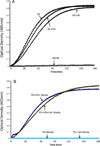
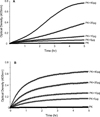
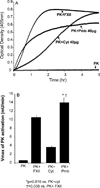
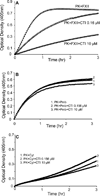

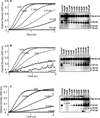



Similar articles
-
Identification and characterization of prolylcarboxypeptidase as an endothelial cell prekallikrein activator.J Biol Chem. 2002 May 17;277(20):17962-9. doi: 10.1074/jbc.M106101200. Epub 2002 Feb 5. J Biol Chem. 2002. PMID: 11830581
-
Factor XII does not initiate prekallikrein activation on endothelial cells.Thromb Haemost. 1998 Jul;80(1):74-81. Thromb Haemost. 1998. PMID: 9684789
-
Assembly, activation, and signaling by kinin-forming proteins on human vascular smooth muscle cells.Am J Physiol Heart Circ Physiol. 2005 Jul;289(1):H251-7. doi: 10.1152/ajpheart.00206.2004. Am J Physiol Heart Circ Physiol. 2005. PMID: 15961376
-
Pathogenic mechanisms of bradykinin mediated diseases: dysregulation of an innate inflammatory pathway.Adv Immunol. 2014;121:41-89. doi: 10.1016/B978-0-12-800100-4.00002-7. Adv Immunol. 2014. PMID: 24388213 Review.
-
The bradykinin-forming cascade: a historical perspective.Chem Immunol Allergy. 2014;100:205-13. doi: 10.1159/000358739. Epub 2014 May 22. Chem Immunol Allergy. 2014. PMID: 24925400 Review.
Cited by
-
Plasma Prekallikrein Is Associated With Carotid Intima-Media Thickness in Type 1 Diabetes.Diabetes. 2016 Feb;65(2):498-502. doi: 10.2337/db15-0930. Epub 2015 Nov 24. Diabetes. 2016. PMID: 26603531 Free PMC article.
-
Atherosclerosis: a chronic inflammatory disease mediated by mast cells.Cent Eur J Immunol. 2015;40(3):380-6. doi: 10.5114/ceji.2015.54603. Epub 2015 Oct 15. Cent Eur J Immunol. 2015. PMID: 26648785 Free PMC article. Review.
References
-
- Ross R. Atherosclerosis: An inflammatory disease. NEJM. 1999;340:115–126. - PubMed
-
- Clowes AW, Karnovsky MJ. Suppression by heparin of smooth muscle cell proliferation in injured arteries. Nature. 1977;265:625–626. - PubMed
-
- Jackson CL, Schwartz SM. Pharmacology of smooth muscle cell replication. Hypertension. 1992;20:713–736. - PubMed
-
- Luscher TF, Tanner FC, Tschudi MR, Noll G. Endothelial dysfunction in coronary artery disease. Annu Rev Med. 1993;44:395–418. - PubMed
-
- Shaw Jl, Diamandis EP. Distribution of 15 human kallikreins in tissues and biological fluids. Clin Chem. 2007;53:1423–1432. - PubMed
Publication types
MeSH terms
Substances
Grants and funding
LinkOut - more resources
Full Text Sources
